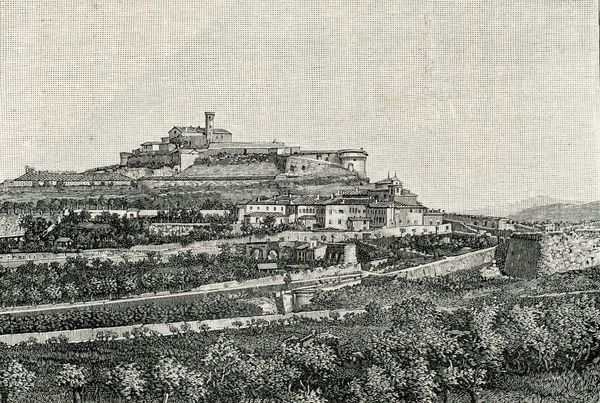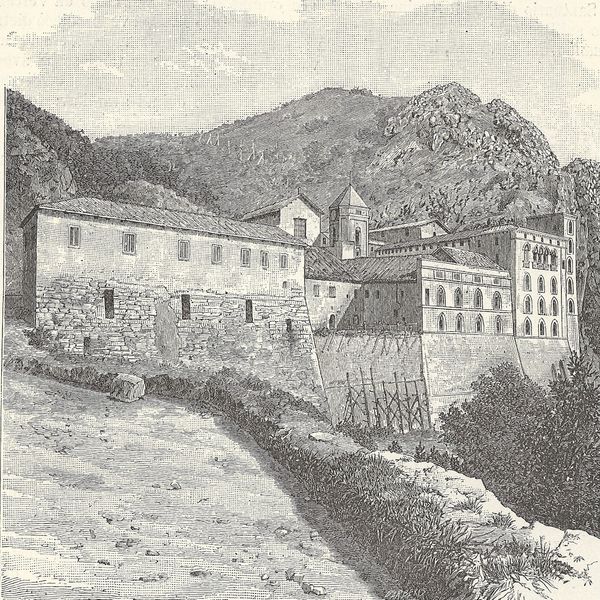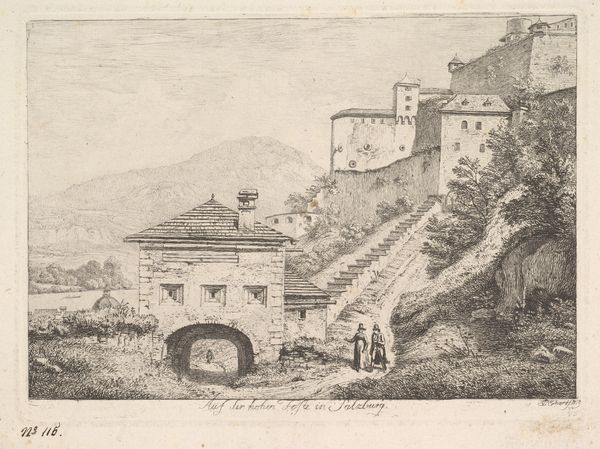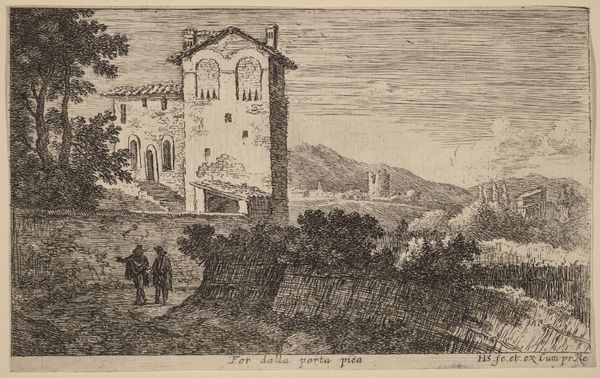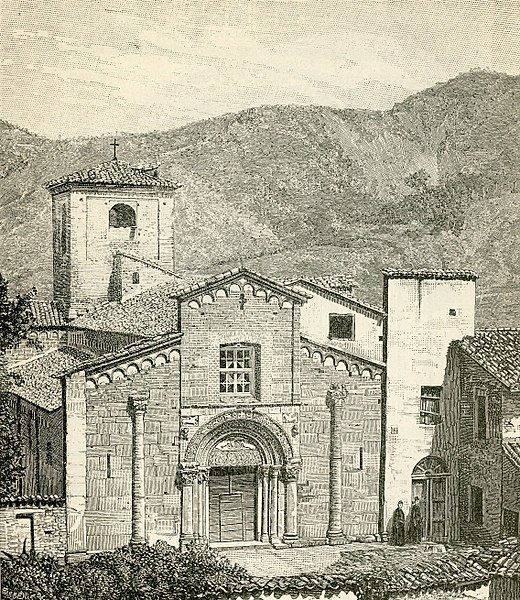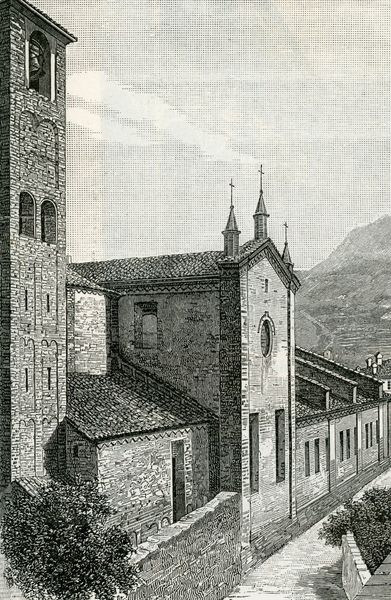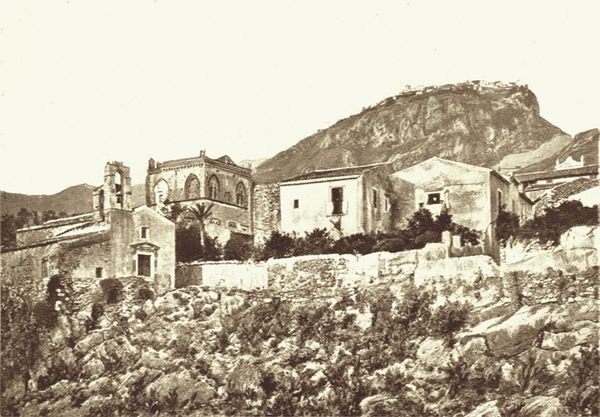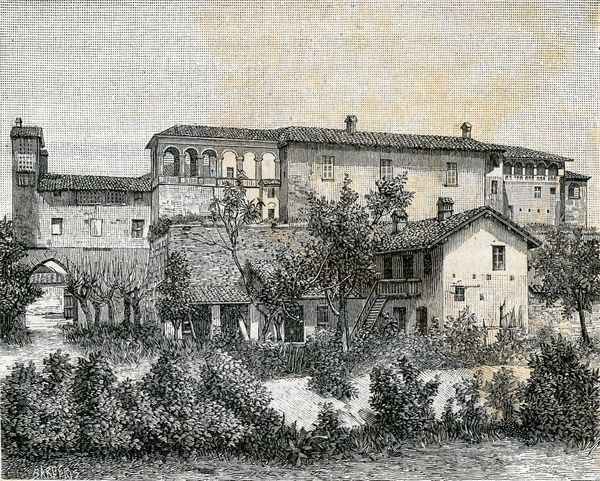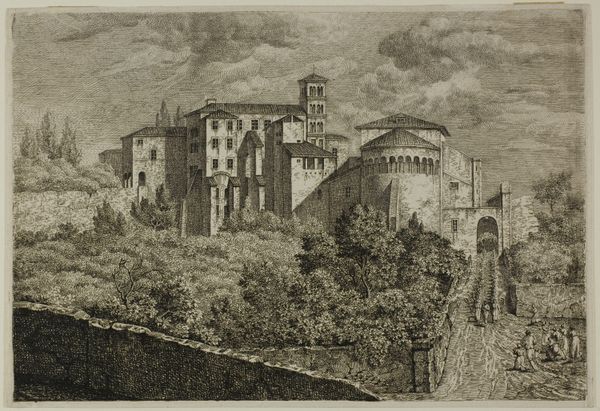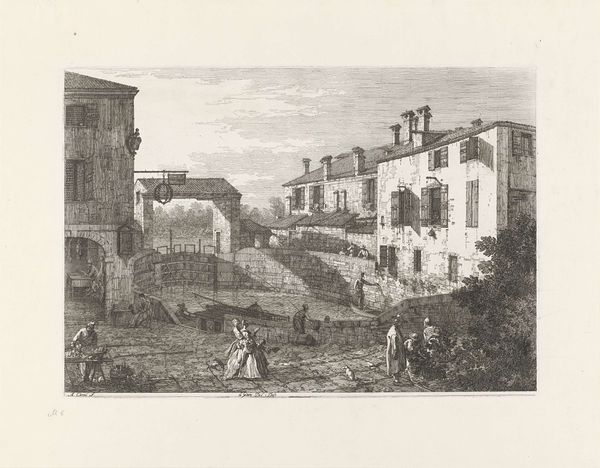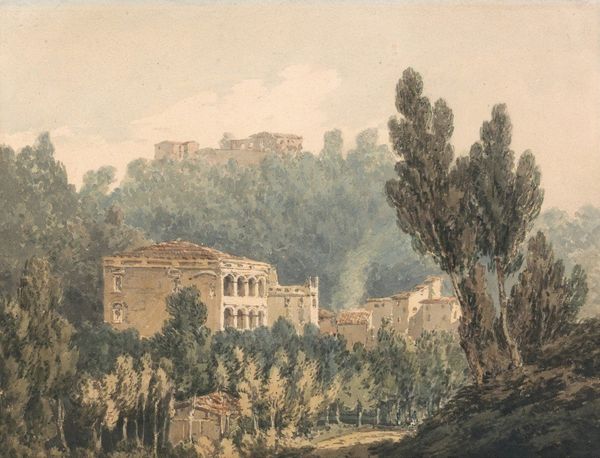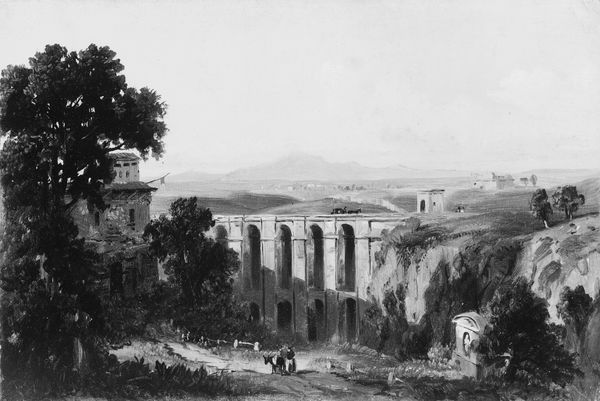
drawing, pen
#
drawing
#
landscape
#
pen
#
cityscape
#
italian-renaissance
Copyright: Public domain
Editor: Here we have Giuseppe Barberis's 1895 pen drawing, "Veduta Del Paese E Del Soprastante Castello Dei Malaspina". It is quite intricate! What really catches my eye is how the detailed linework creates such a striking contrast between the foreground village and the castle perched above. How do you approach interpreting a work like this, given its emphasis on structure and detail? Curator: The pleasure of a piece such as this lies primarily in its visual structure. Note the careful distribution of light and dark values achieved purely through line density. See how the artist directs our eye? Editor: I see the shading and different marks creating an illusion. Curator: Precisely! From the clustered marks delineating foliage in the foreground to the calculated hatching giving form to the buildings. Ask yourself, how do these formal relationships – line, value, and composition – establish the overall effect? It is not a narrative piece, but how does the meticulous rendition communicate place and even, perhaps, the enduring strength of the architectural forms themselves? Editor: So, less about who lived there and more about the shapes, texture and tones that were used to depict the city? Curator: Exactly. Focus on the artistry. The artist's choice to capture it, and how those formal choices manifest meaning. Notice the stark geometry of the rooftops against the organic forms of the landscape, how do they convey tension or harmony? Editor: I see what you mean now. Thinking about it purely in terms of the formal choices helps me to appreciate the piece for its visual composition first and foremost. Curator: Yes, understanding this principle enables us to analyze visual language without being trapped within the work’s subject.
Comments
No comments
Be the first to comment and join the conversation on the ultimate creative platform.
